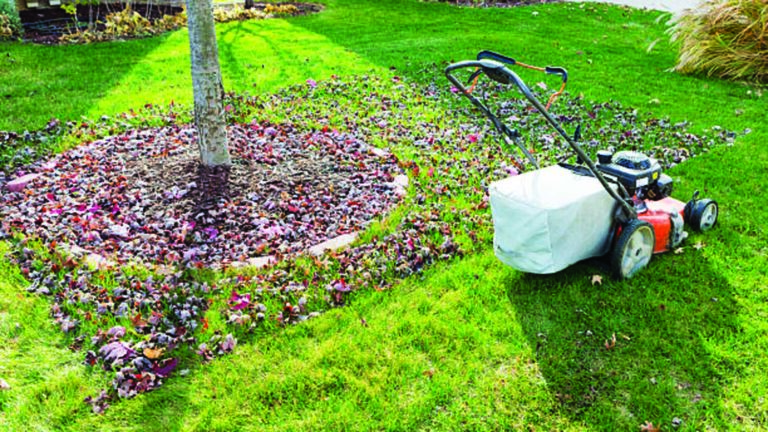Like many Coloradoans, our family made some home improvements during the pandemic. One major project was to convert turfgrass in our front lawn to a low-water and pollinator-friendly xeriscaped groundcover.
As we patiently awaited our award from the City of Wheat Ridge for being outstanding sustainably minded citizens (still waiting…), I wanted to dig a little bit deeper into what kind of impact we were actually having. And while we did see a reduction in our water bill and beautiful blooming flowers, the actual impact of our water savings project was a little more sobering.
All of the water that households in Colorado use – for cooking, showering, lawn-watering, pet fish, decorative fountains – combined is only about 7 percent of the entire state’s water demand. The state’s big user? Agriculture, at around 89 percent. So how big of an impact could our one tiny project (which was not cheap) even have?
And while you might think that all of that agricultural water is being used to feed Coloradoans, think again: only 1 percent of the corn grown in Colorado is the “sweet corn” that you find at King Soopers. The other 99 percent (on over 1.3 million irrigated acres) is not intended for human consumption and instead is used for livestock feed, vehicle fuel (i.e., ethanol) and other industrial applications.
Meanwhile, Colorado cities have been able to cut back their water usage by over 20 percent in the past decade, but agriculture’s water use rates have stayed at the same level since 2003.
Why are we so focused on saving water in urban areas when our agricultural water usage is much higher and most of it isn’t even being used to grow food for people?
As it turns out, water in Colorado is complicated. Kate Greenberg, the state’s Agriculture Commissioner, said that water in Colorado is “an incredibly complex beast, both from the legal and hydrologic perspective.”
In many ways, farmers’ hands are tied by Colorado state law and interstate compacts, and they could lose their water rights if they adopt more efficient irrigation practices. Those efficient irrigation technologies are also too expensive to justify for farmers growing low-value commodity crops like corn, wheat and hay. Farmers are savvy businesspeople who are essential to Colorado’s economy and landscape, but the regulatory and financial systems they are operating in seem to undermine their economic well-being along with the management of our state’s water resources.
How can we support our farmers while also ensuring our cities and families have enough water? While I do not know the answer to that question, what I do know is that our demands for water are currently greater than our snowpack and reservoirs and interstate agreements will allow. And it’s only expected to get worse: both Colorado agriculture and urban planners are projecting higher demands each year, and climate change is expected to continue reducing available water. If this is any motivation, when states can’t fix things, the federal government steps in: on Aug. 16, the Bureau of Reclamation reduced water allocations of the Colorado River (which starts in this state but provides water to 40 million people in seven states and supports $15 billion in agriculture each year) to Nevada and Arizona. Arizona will have to cut 21 percent of their water allotment next year.
Will Colorado be next? Or can we proactively be more efficient with our water? Can we grow more food with less water? We can. Xeriscaping your lawn is one way, sure. But for bigger impacts across the state, we need bigger solutions. The technology is there, and we can look to other countries (e.g., Israel) that have been able to integrate water conservation and reuse technologies into their cities and farms. But there needs to be political will and financial incentives for farmers to do so. Let’s let our state representatives know that current water policies are not working for Colorado’s future economy. I am still proud of our xeriscaped lawn, but pretty flowers and butterflies in cities won’t be enough to solve our state’s water challenge.
Sources
- https://coloradocorn.com/products/#:~:text=Of%20all%20the%20corn%20that’s,vehicle%20fuel%20and%20industrial%20applications.
- https://coloradoencyclopedia.org/article/water-colorado
- https://economic-impact-of-ag.uada.edu/colorado/
- https://www.watereducationcolorado.org/fresh-water-news/report-colorados-farm-water-use-exceeds-national-average-despite-efforts-to-conserve/
- https://www.nass.usda.gov/Quick_Stats/Ag_Overview/stateOverview.php?state=COLORADO
- https://www.npr.org/2022/08/16/1117656357/colorado-river-cuts-expected-for-arizona-nevada-and-mexico
- https://www.cnn.com/2022/08/16/us/colorado-river-water-cuts-lake-mead-negotiations-climate/index.html
Jordan Macknick is the Lead Energy-Water-Land Analyst for National Renewable Energy Laboratory. He is a member of the Strategic Energy Analysis Center’s Systems Modeling team within the Resources and Sustainability Group.






